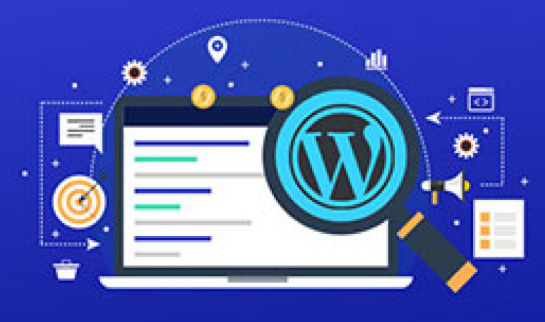One of the more effective methods of boosting the amount of organic traffic coming to your WordPress site is through search engine optimization (SEO). However, given that algorithm changes and SEO trends are so dynamic, it becomes difficult to keep track of what is actually effective.
So in this guide, we are going to address WordPress SEO secrets that do work in 2025 aka practical tips on SEO that can give you real results, and not just hypothetical ones. As a blogger, a business, or a web developer, these tips will guide you to increase the visibility, beat your competitors, and drive more Google and other search engines traffic.
1. Install a wordpress theme that is SEO friendly
Your WordPress theme is the basis of good SEO. Light, minimalistic coded and responsive themes assist your site to load faster as well as perform better on search engines.
Top WordPress and SEO-Optimized Themes of 2025:
-GeneratePress
-Astra
-Kadence
-Neve
-Blocksy
Select a theme, which is compatible with schema markup, quick loading, and accessibility functionality, and which has it built innately.
2. Install a Powerful SEO Plugin
An SEO plugin is essential for optimizing metadata, generating sitemaps, and controlling how your site appears in search results.
Top SEO Plugins for WordPress:
Rank Math – Feature-rich and beginner-friendly
Yoast SEO – The industry standard with great readability tools
All in One SEO (AIOSEO) – Great for advanced users
These plugins allow you to:
Add custom titles and meta descriptions
Create and submit XML sitemaps
Set canonical URLs
Optimize for social sharing
3. Focus on Keyword Research
Keyword research is still a cornerstone of successful SEO. Understanding what your audience is searching for and optimizing your content accordingly is key.
Tools to Find High-Intent Keywords:
-Ahrefs
-SEMrush
-Google Keyword Planner
-Ubersuggest
-AnswerThePublic
Use long-tail keywords and search intent-based queries such as:
-“Best free WordPress SEO plugins 2025”
-“How to optimize WordPress for Google ranking”
4. Optimize Title Pages and meta descriptions
Your WordPress site should have a differentiating, keyword optimized title tags and meta descriptions of each post or page. They are shown in the search engine and affect the click through rate.
Best Practices:
-Make titles 60 characters or less
-Use target keywords at the top endings
-Write interesting descriptions less than 155 character length which is human friendly
-Keywords stuffing should be avoided
-Test how your metadata would appear in search boxes by utilizing your SEO plugin.
5. Improve Your Permalink Structure
WordPress allows you to customize your URL structure. For SEO, it’s important to use short, keyword-rich permalinks.
Change Permalink Settings:
Go to Settings > Permalinks and select:
Post name: https://example.com/sample-post/
Avoid:
-Using dates (unless necessary for news)
-Including stop words like “a,” “the,” or “and”
-Very long slugs (keep it under 60 characters)
6. Use Internal Linking Strategically
Internal linking is a powerful SEO strategy to improve crawlability, distribute page authority, and keep users engaged longer.
How to Use Internal Links:
-Link to relevant blog posts using descriptive anchor text
-Use 3–5 internal links per post
-Prioritize linking to cornerstone content (e.g., pillar pages or guides)
7. Optimize Images for SEO
Images help improve content readability, but if not optimized, they can slow down your site and hurt SEO.
Image Optimization Tips:
-Use descriptive file names (e.g., wordpress-seo-tips.jpg)
-Add ALT text with relevant keywords
-Compress images using plugins like ShortPixel or Smush
-Use WebP format for faster loading
8. Boost Speed and Performance
Site speed is now a confirmed Google ranking factor. A slow WordPress site won’t just hurt SEO—it’ll also drive users away.
How to Improve WordPress Speed:
-Choose fast web hosting (e.g., SiteGround, MWDHosting, or ServerGigabit)
-Use caching plugins like WP Rocket or LiteSpeed Cache
-Optimize databases with WP-Optimize
-Use a Content Delivery Network (CDN) like Cloudflare
9. Make Your Site Mobile-Friendly
With mobile-first indexing, Google prioritizes how your site performs on mobile devices. Use a responsive design, avoid intrusive pop-ups, and ensure buttons are touch-friendly.
Test mobile usability using Google’s Mobile-Friendly Test Tool.
10. Create High-Quality Content Regularly
Nothing beats consistent, valuable, and keyword-rich content. Google’s algorithm favors well-written content that answers user queries in depth.
Content Tips:
-Aim for at least 1,000 words per post
-Use headers (H2, H3) to break up content
-Answer frequently asked questions
-Update old posts to keep them fresh and relevant
11. Use Schema Markup and Rich Snippets
Schema helps search engines understand your content. It also enables rich results, like star ratings, product info, and FAQs.
Plugins to Add Schema:
-Schema Pro
-Rank Math SEO
-WP Review
Implement:
-Article schema for blog posts
-FAQPage for questions and answers
-LocalBusiness schema for location-based websites
12. Secure Your Site with HTTPS
Google considers HTTPS a ranking factor. Make sure your WordPress site uses an SSL certificate.
How to Enable HTTPS:
-Most hosting providers (like Bluehost, Cloudways, or ServerGigabit) offer free SSL via Let’s Encrypt
-Update your WordPress Address and Site Address in Settings
Conclusion: Smart SEO Makes WordPress Work for You
SEO isn’t about tricks—it’s about building a fast, mobile-friendly, and helpful site that both users and search engines love. By following these WordPress SEO tips that actually work, you’ll position your website for long-term growth and visibility.

